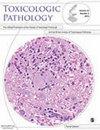Scientific and Regulatory Policy Committee Points to Consider: Primary Digital Histopathology Evaluation and Peer Review for Good Laboratory Practice (GLP) Nonclinical Toxicology Studies
IF 1.4
4区 医学
Q3 PATHOLOGY
引用次数: 1
Abstract
The Society of Toxicologic Pathology’s Scientific and Regulatory Policy Committee formed a working group to consider the present and future use of digital pathology in toxicologic pathology in general and specifically its use in primary evaluation and peer review in Good Laboratory Practice (GLP) environments. Digital histopathology systems can save costs by reducing travel, enhancing organizational flexibility, decreasing slide handling, improving collaboration, increasing access to historical images, and improving quality and efficiency through integration with laboratory information management systems. However, the resources to implement and operate a digital pathology system can be significant. Given the magnitude and risks involved in the decision to adopt digital histopathology, this working group used pertinent previously published survey results and its members’ expertise to create a Points-to-Consider article to assist organizations with building and implementing digital pathology workflows. With the aim of providing a comprehensive perspective, the current publication summarizes aspects of digital whole-slide imaging relevant to nonclinical histopathology evaluations, and then presents points to consider applicable to both primary digital histopathology evaluation and digital peer review in GLP toxicology studies. The Supplemental Appendices provide additional tabulated resources.科学和监管政策委员会考虑的要点:良好实验室规范(GLP)非临床毒理学研究的初级数字组织病理学评估和同行评审
毒理学病理学学会的科学和监管政策委员会成立了一个工作组,以考虑数字病理学在毒理学病理学中的一般应用,特别是在良好实验室规范(GLP)环境中的初步评估和同行评审中的应用。数字组织病理学系统可以通过减少差旅、增强组织灵活性、减少幻灯片处理、改善协作、增加对历史图像的访问以及通过与实验室信息管理系统集成提高质量和效率来节省成本。然而,实施和操作数字病理系统的资源可能是重要的。考虑到决定采用数字组织病理学所涉及的规模和风险,该工作组使用相关的先前发表的调查结果及其成员的专业知识创建了一篇文章,以帮助组织建立和实施数字病理学工作流程。为了提供一个全面的视角,本出版物总结了与非临床组织病理学评估相关的数字全片成像方面,然后提出了适用于GLP毒理学研究中初级数字组织病理学评估和数字同行评审的要点。补充附录提供了额外的表格资源。
本文章由计算机程序翻译,如有差异,请以英文原文为准。
求助全文
约1分钟内获得全文
求助全文
来源期刊

Toxicologic Pathology
医学-病理学
CiteScore
4.70
自引率
20.00%
发文量
57
审稿时长
6-12 weeks
期刊介绍:
Toxicologic Pathology is dedicated to the promotion of human, animal, and environmental health through the dissemination of knowledge, techniques, and guidelines to enhance the understanding and practice of toxicologic pathology. Toxicologic Pathology, the official journal of the Society of Toxicologic Pathology, will publish Original Research Articles, Symposium Articles, Review Articles, Meeting Reports, New Techniques, and Position Papers that are relevant to toxicologic pathology.
 求助内容:
求助内容: 应助结果提醒方式:
应助结果提醒方式:


